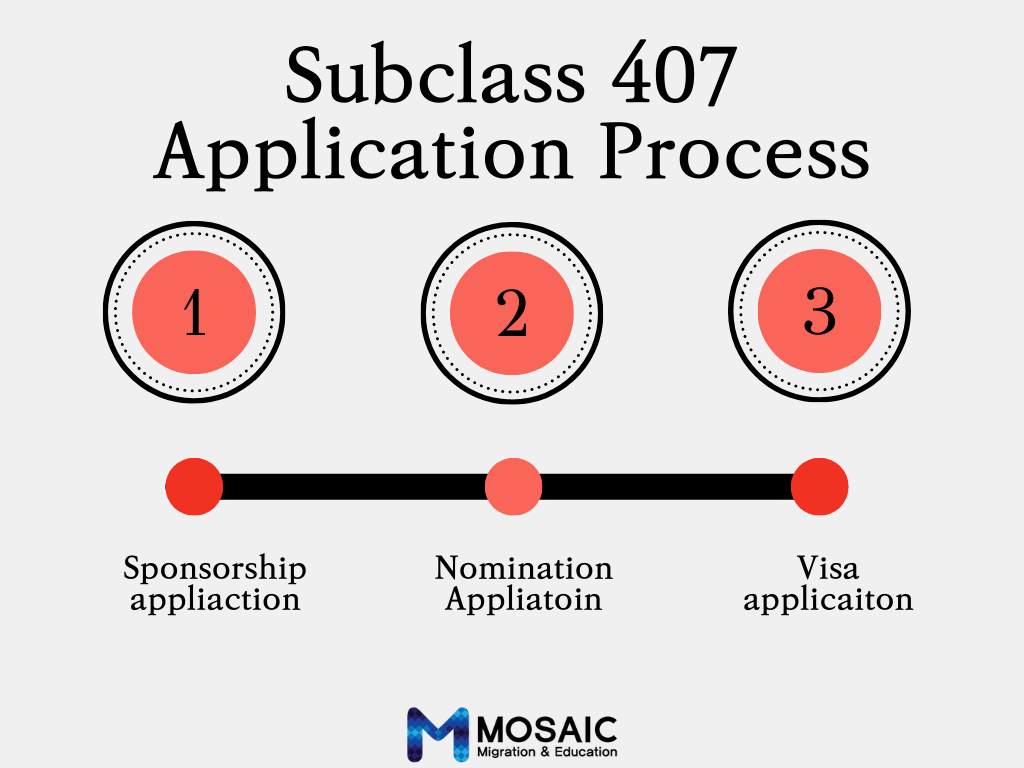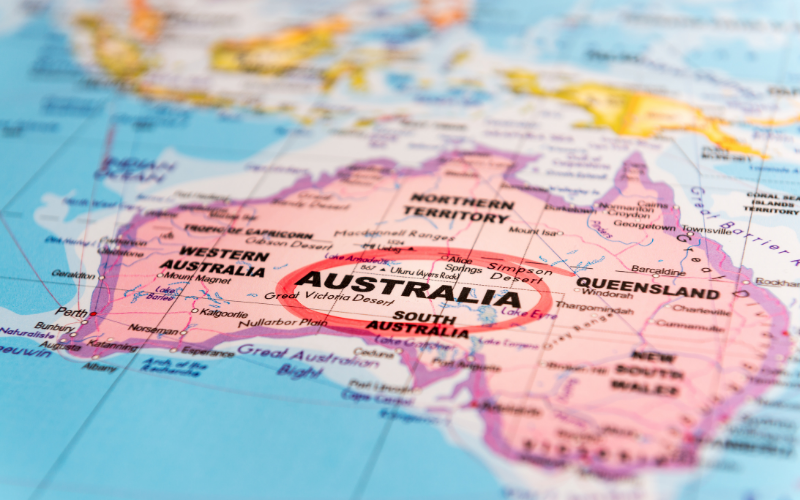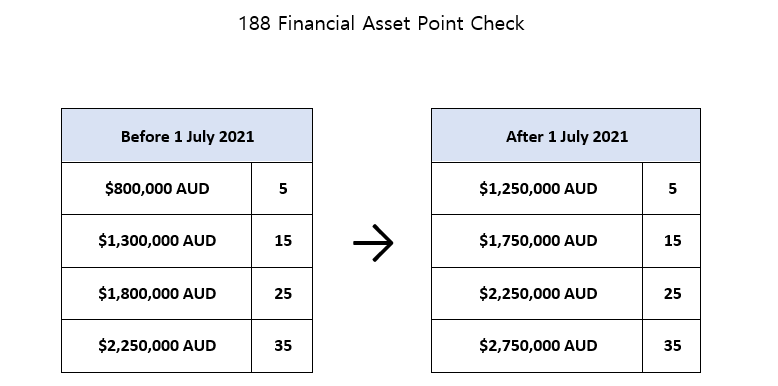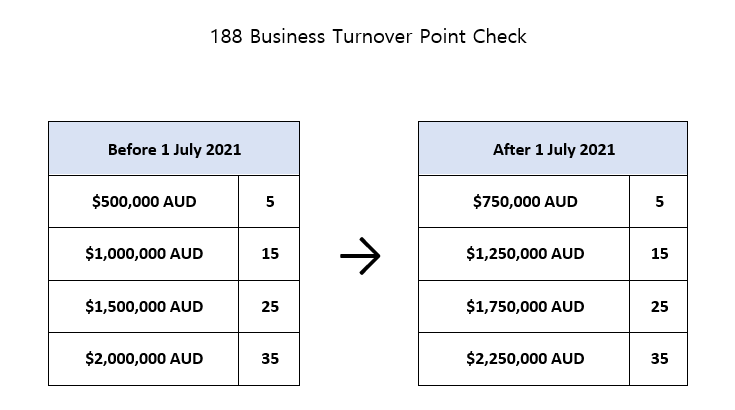
Temporary Changes to subclass 485 Graduate Visa
According to the new rules and regulations, there has been an announcement on the temporary changes to the Australian Graduate 485 Visa (Graduate work stream).
Changes in requirements for Temporary Graduate 485 visa has come into effect from 1 July 2022.
What is the subclass 485 visa?
The subclass 485 visa is a visa that allows you to reside in Australia temporarily after completing your studies in Australia.
Before 1 July 2022, only Medium-long Term skills occupation and the requirement of applying for the provisional skilled assessment was needed to satisfy the conditions of the 485 Visa Graduate work Stream.
However, From 1 July 2022
You only need to meet the Australian study requirement!
This is great news for students as they can obtain a graduate visa in Australia for up to 2 years and can be a pathway to apply for the permanent residence.
Conditions before 1 July 2022
- Medium-Long Term Skills occupation generally Diploma graduates who have completed Commercial Cookery, Early Childhood education, Automotive Maintenance and Carpenter etc.
- Provisional Skilled Assessment
- Under 50 years old
- English requirements 6.0 or higher based on IELTS (5.0 or higher in each area), other recognised English tests are TOFEL iBT, PTE Academic, OET, Cambridge C1 Advanced
Changes from July 1, 2022 until June 30, 2023
- No Occupation nominated required
- No Provisional Skills assessment required
As long you meet the Australian Study Requirements, you can become a 485-visa applicant!
What are the Australian Study Requirements?
(Australian Study Requirements can vary on individual circumstances)
01. Course Requirements
- be either a Bachelor’s degree or higher, a diploma, an advanced diploma, or a trade qualification
- have been undertaken at an Australian educational institution in Australia
- have been taught in English
- be registered on CRICOS
- have been undertaken while you held a visa authorising you to study
- Note: You cannot use English language proficiency courses or enabling programs to meet the Australian study requirement.
02. The Academic Years Study Requirements
- be either a Bachelor’s degree or higher, a diploma, an advanced diploma, or a trade qualification
- have been undertaken at an Australian educational institution in Australia
- have been taught in English
- be registered on CRICOS
- have been undertaken while you held a visa authorising you to study
- Note: You cannot use English language proficiency courses or enabling programs to meet the Australian study requirement.
03. Minimum of 16 months study in Australia
The Australian study requirement cannot be met in less than 16 calendar months.
The above temporary changes will take effect from July 1, 2022, and will last until June 30, 2023, with the possibility of extension.
Subclass 485 visa application must be made within 6 months from the course completion date.
Conditions may vary slightly depending on individual circumstances so contact us for a consultation, or if you have any questions about visa requirements for Australian graduates, please contact Mosaic Immigration!

Partner Visa: Important Points
This column will learn about the Partner Visa subclass 820/801 (onshore) and 309/100 (offshore).
Subclass 820/801 (Onshore) – Applying in Australia
Subclass 309/100 (Offshore) – Applying outside Australia
Partner visa number changes depending on the location of the applicant when applying for a visa, and there are pros and cons in the two visa types.
If applying within Australia (onshore), the applicant must hold a substantive visa at the time of application.
*Substantive visas are all visas except bridging visa, criminal justice visa and enforcement visa*
For onshore applications, a bridging visa is issued, and even before a permanent residency is granted, they can receive Australian Medicare benefits while waiting for the visa grant.
A partner visa requires the applicant to have a genuine relationship with an Australian citizen, permanent resident, or an eligible New Zealand citizen. The relationship must continue until the date the visa is granted.
*Exceptions apply (Domestic Violence, Partner passed away etc.)*
So, what is a Partner relationship, and how do we prove it?
The Australian Immigration law divides partner relationships into Spouse and De Facto relationships.
A spouse Relationship is when you are legally married and,
A De Facto Relationship is a Common-law relationship and generally requires that you have lived together for at least 12 months and maintained an exclusive relationship.
For a De Facto relationship, a Civil Partnership Registration Certificate is often used as an alternative to the 12-month residency requirement.
It would be nice if a Marriage Certificate or a Civil Partnership Registration Certificate could prove a Partner relationship. Still, as required by the Australian Immigration Law, you must submit sufficient supporting documents for the four types below to prove a genuine relationship.
- Financial Aspects of the relationship
- Nature of Household
- Social Aspect of Relationship
- Nature of commitment to each other
There are cases in which the visa examination is delayed or rejected if there are insufficient supporting documents for the four types.
Examples of specific evidence for the four types are:
| Financial aspects of the relations | · Joint mortgage or lease documents · Joint loan documents for major assets like homes, cars, or major appliances · Joint bank accounts Statements · Household bills in both names |
| Nature of Household | · Household bills in both names · Mail or emails addressed to you both · Documents that show joint responsibility for children · Documents that prove your living arrangements |
| Social Aspect of Relationship | · Joint invitations or evidence you go out together · Proof you have friends in common (group photos) · Proof you have told government, public or commercial bodies about your relationship · Proof you do joint sporting, cultural or social activities together · Proof you travel together |
| Nature of commitment to each other | · Proof you have knowledge of each other’s background, family situation or other personal details. · Proof you have combined your personal matters · The terms of your wills · Proof you stay in touch when apart |
Other evidence includes a statement of relationship, Form 888 (from two or more people who are Australian citizens or permanent residents), photos and travel records.
The Partner visa is not a simple visa that can be granted just with the fact that the applicant and sponsor is married or in a Common-law marriage.
Please contact us if you are preparing for a partner visa and need professional advice.
In the next column, we will take a closer look at the points to be aware of when applying for a partner visa through real cases in which the partnership was maintained, but the visa was rejected.

Welcome to the Team!
We are proud to announce a new member of our team!
Gladin is joining us to help manage the Offshore Philippines Market of Mosaic Migration & Education in Cebu.
Please feel free to contact Gladin directly on our Mosaic Philippines Facebook Page
https://www.facebook.com/Mosaic-Migration-Education-Philippines-110079105063973

Australian Visa Application Charge to increase by 3% from 1 July 2022
From July 1st, 2022, it has been announced that the Australian Visa application fee will be increased by 3% roughly reflecting the CPI index.
The changed application fee will be effective from July 1, 2022.








For more information visit:
Migration Amendment (Visa Application Charges) Regulations 2022 (legislation.gov.au)

What is Subclass 407 visa?
In this column, we will look at the subclass 407 training visa.
The 407 visa, commonly referred to as a Training visa, is a visa that allows people with limited skills to reside in Australia for the purpose of training under an employer sponsored visa.
The 407 Training Visa has 3 streams:
1. Workplace-based training
2. Structured workplace-based training
3. Training that promotes capacity building overseas
From the 3 streams, we will take a close look at the most applied Structed workplace-based training stream.
This stream provides up to two years of work experience in Australia. Those who lack more than two years of work experience, normally required for a Subclass 482 Temporary Skill Shortage (TSS) visa, can go through the training period of a 407 visa to satisfy career requirements.
Advantages of 407 Visa
- No Skilled Assessment Required
- Low requirement for English Score
- Live in Australia for up to 2 years
- Bring eligible family members (such as partner and children)
- Apply both onshore or offshore
General visa requirements for 407 Visa
- Be 18years or older
- Must be sponsored
- Functional English Skills – IELTS 4.5 or higher
- Skill Included in the list of occupational groups applying for 407 visas
- Are able to support themselves (and accompanying family members) financially
- Meet health and character requirements
The 407 visa process generally involves of 3 stages:

- Sponsorship application
The sponsoring organisation must meet the qualifications for issuing a visa and become an approved ‘Temporary Activities Sponsor’.
It must also be an organisation or company legally operating in Australia and capable of providing relevant work for at least 30 hours per weeks.
- Nomination application
A Nomination is required to be lodged by a sponsoring organization (unless where the sponsoring organisation is a Commonwealth agency) and the requirement differs based on the nomination eligibility types.
For Occupational Training To Enhance Skills stream, only the occupation specified on the Skilled Occupation List are eligible for occupational training are eligible for training. The training program must be strucuted to meet the specific training requirements and must include a minimum of 30 hours of training per week of which at least 70% must be conducted in the workplace. Applicant’s prior or related experience may be considered prior to approving the Nomination.
- Visa application
In the visa application, the applicant need to demonstrate that they satisfy the visa criteria, including age, skill, English Languagae competency, health and character.
For more information, please contact us.
In the next column, we will look how to prepare for Partner Visa through partner visa refusal cases.

Why Timing Matters when Applying for State Sponsorship
In this column, we will look at the number of migrants allocated to the State by the Australian Federal Government every fiscal year and the importance of timing when applying for a State Sponsorship.
According to our previous column, ‘2023 Federal Prospects Budget’ uploaded on April 20, 2022, we can see that the number of the Business Investment visa was decreased by 4,000 more from the previous year, 13,500 places, with 9,500 places now.
My L, planning to immigrate to Australia on a 188 Business Visa from Korea, read our columns and had his first consultation with us through Kakao Talk on March 28.
During the consultation, due to time constraints such as preparing documents, we expected to apply after July 1, 2022, when the next fiscal year starts. However, After the announcement of the 2023 Federal Budget on March 30, of 4,000 places decreasing in the 188 Business Visa, our Mosaic Team strongly recommended Mr L to apply before the end of this fiscal year 2022 despite the short time frame. Based on Mosaic Migration’s long experience and belief in putting customers as our top priority, Mr L accepted our proposal. On April 14, we signed a 188-business visa client service agreement and officially started filling out questionnaires and preparing documents.
Mr L, who actively prepared for the EOI application in a short time, submitted his EOI (Expression of Interest) on May 4, and the Queensland State Government accepted the Initial Invitation on May 10. The Nomination was approved two weeks after the Invitation to lodge on May 23 without any further questions or additional document requests. The case has been processed very quickly and receiving a nomination after 5 weeks of signing the Client agreement is rare.
During the whole period of receiving the Nomination and signing the Client Agreement Contract on May 23, 2022, we could never have face-to-face consultation because Mr L was in Korea. But thanks to trusting in our company and actively following our suggestions, we were able to get good results in a short amount of time.
The deadline for State Sponsorships for each visa may vary as each State receives a State Quota from the Federal Government and must exhaust all places within the Fiscal Year. For example, on May 6, 2022, the State of QLD announced that they would no longer accept EOI (Expression of Interest) for Provisional Skilled Immigration Programs (subclass 190 and subclass 491). However, since the Business and Investment visas did not meet their allotted amount this year, Mr L could get State Sponsorship on May 10.
For reference, Victoria has no longer received applications after 5 pm April 29. And In the case of South Australia, they announced on June 7 that they would no longer accept applications for state Sponsorship of the fiscal Year 2022 on these dates for the following visas.
- Business Visa until June 9, 2022, 4:00 pm
- Investment Visa and Large investment visas until June 2, 2022, 4:00 pm
- Offshore Sponsorship for Independent Skills Immigration until June 9, 2022, 4:00 pm
- Onshore applications until June 23, 2022, 4:00 pm
As such, each State may not receive an invitation for EOI (Expression of Interest) and State Sponsorship for that Fiscal Year at any time, even before the end of the fiscal year, if the allotted places are met. Therefore, when preparing for visas that need State Sponsorship like the subclass 188 Business and Innovation Visa, the timing of submitting the EOI (Expression of Interest is also very important.
The new Fiscal Year begins on July 1, 2023 but given the past three years that States have started accepting letters EOIs in October and November, we are not sure when the State will begin receiving EOI in the new Fiscal Year 2023. A few states are still accepting EOI in fiscal 2022 for Business investment visas, so we hope those who wish to file in the fiscal year 2022, with about a month left, do as soon as possible.
In the next column, we will discuss the 407 visa.

Case Study – 188 Investor Visa Application by changing State
This column will look at a visa application case made possible by changing the State for State Government Sponsorship.
Our Client, Mr R, applied for the State Sponsorship before the new 188 Business and Investment visa conditions were announced on July 1, 2021. However, because of the new requirements from July 1, 2021, he had to change the State for State Government Sponsorship to apply for the 188 Investor Visa.
Mr R, wanted to apply for an investment visa through the New South Wales sponsorship and signed the first contract in December 2020. After preparing for about 2 to 3 months, he applied for the State sponsorship. However, they did not receive State sponsorship until June 30, the end of the fiscal year 2021, and had to submit a new letter of intent under the terms and conditions changed after July 1, 2021.
The Australian 188 Business Investment visa eligibility requirements generally described in our column are conditions that 188 visa applications must meet under the requirements of the Australian Federal Government. However, a State Sponsorship must be obtained to apply for the visa. Each State often has additional requirements to select the most suitable applicants. For example, immigrants who wish to do business or live in urban areas such as Sydney, Brisbane, or Melbourne, require a higher application score and higher investment requirements and assets than immigrants who settle and plan to do business or investment in rural areas.
Even under the conditions raised after July 1, 2021, Mr R could obtain enough points to submit a letter of intent. However, because NSW changed its age qualifications to under 50, Mr R, who was 54, could not receive a state sponsorship because of age restrictions.
While preparing for the visa together, we suggested changing the State government to Queensland, considering his plans, business tendencies and lifestyle. Mr R positively accepted our suggestion, received the letter of intent within 1 week, and successfully applied for the 188 Investor visa.
After receiving the Queensland Government Sponsorship successfully, he was able to lodge his 188-visa application. Mr R, who was 54 at the time of application, may not have been able to apply for the 188 Investor Visa if he had not fully understood the different requirements of each State’s visa and had not trusted us and accepted the offer positively. Moreover, because of the age limit, he may not have expected to apply for the 188-investment visa.
Compared to the past, each State government has more stringent and specific requirements when selecting suitable immigrants for the development direction of the State Government. It is essential to take the advice of a migration agent who clearly understands the basic business investment visa requirements and the State requirements to which you wish to immigrate before making your immigration plan.
In the next column, we will examine the correlation between the number of immigrants allocated by the federal government to the State and the timing of application through the case of Mr L, who obtained state sponsorship in May 2022.

188 Business and Investment Visa adjustment in 2012 and 2021
This article will compare the change after the Australian 188 Business and investment visa on 1 July 2021 with the year after the change in 2012.
Due to changes in the conditions and subclass adjustment of 188 Business and investment visas in 2012, the number of visa applicants in Korea and Australia decreased significantly in 2013 and 2014.
Many people who prepared for the 188 Investment visa or was waiting for a sponsorship after submitting the letter of intent by 2011 could not meet the qualifications because the investment amount had doubled from $750,000 to $1.5 million in 2012. Due to this, many people considered immigrating to other English countries such as the United States and Canada. However, the number of applicants for business and investment visas in Australia steadily returned in fiscal 2016.
Because of this, many expected a rise again in the Australian investment visa score in 2020. Likewise, according to the change of requirements announced in 2021, the investment amount requirement doubled from $1.5 million to $2.5 million. However, despite the increase in the minimum assets requirements from $800,000 to $1.25 million, inquiries for Australian business and investment visas have increased.
Many applicants planning to immigrate to Australia has risen significantly compared to 2012, with the 188 Business and Investment visa. As a consequence of wanting to live in a better environment, obtaining permanent residency for their children after studying in Australia, and the opportunity in business and investment in Australia. Also, the rapidly changing political and economic situation in Korea and visa requirements seems to significantly impact the number of Australian immigrant applications. Thus, despite the changed conditions in 2021, the number of applicants has risen considerably compared to 2012 and is no longer impacted considering immigration to Australia. Due to global inflation in decades, the number of people preparing to immigrate to Australia is likely to increase in the next few years unless the Australian immigration law changes again.
In the next column, we will look at the two most recent cases of 188 business visas. Firstly, a real case where the change of State was necessary to gain state sponsorship because of the changed 188 investment visa qualifications, and another case of applying for the 188-investment visa in Korea.

Federal Election 2022: Australia’s government changes in 9 years
This column will look at the changes Australia will see under the Labour Government in power after 9 years.
Australia’s 2022 federal elections, held on 21 May, ended with Labour’s victory over the Liberal Party led by Prime Minister Scott Morrison for the first time in 9 years.
This election was of particular interest to many people because it was held shortly after the 2022-23 Federal Budget was announced.
Many changes are expected with the 31st Prime Minister, Anthony Albanese of the Labour Party.
The Australian Labour Party has yet to announce a policy on immigration policy, but they have mentioned that the overall immigration system needs to get revised. As mentioned in the previous column, the Gridlock situation is the biggest problem with the current Australian visa system and the expectation of people on how the Labour party will deal with this situation is significant.
According to the main objectives of the Labour Party’s immigration policy attached to the ALP National Platform in November 2021, it was announced as follows:
• Meeting skills shortages
• Protecting local employment opportunities and working conditions
• Preventing exploitation of temporary workers, particularly international students and working holidaymakers
Prime Minister-elect Anthony Albanese said he would prefer permanent migration over temporary migration, given Australia’s image as a successful multicultural country in the world. He said he would consider giving permanent residency to foreign workers so that immigrants don’t remain “permanently temporary”. He also emphasized that he would increase the number of nurses in aged care homes, saying that immigration policies could bring in a foreign nurse to Australia.
It is hopeful news for those currently preparing for immigration and permanent residency in Australia. However, with the changes in immigration policy coming ahead, people preparing for immigration and permanent residence will need to prepare well.

188 Business and Investment Visa Update
This column will look at the 188 Business and Investment visa eligibility requirements that have changed from 1 July 2021, revised in 9 years since 1 July 2012.
Firstly, there is no change in visa subclass numbers compared to the adjustment in 2012. However, in the modified amendment, the Premium Investor Stream, commonly known as 188D, which required an investment of 15 million, has been removed.
The minimum Financial Asset and Business Turnover requirements of the 188 visas in the point-based Immigration program have been raised to account for inflation over the past 9 years as follows.
- Minimum Financial Asset has risen from $800,000 to $1.25 million.
- Assets are the assets before the submission of the EOI (Expression of interest), (To apply for asset points, you must have the assets listed in the table below for at least two fiscal years)
- Includes both Business and Personal assets
- Include all assets of the primary and secondary applicant

- Business Turnover requirement has changed from the previous minimum of $500,000 to $750,000 per year.
- Two highest fiscal years among the four fiscal years before the submission of the EOI (Expression of interest)
- Can apply for the sum of two businesses’ revenue
✦ Additional requirements for Ownership Interest in Main Business ✦

- If you received a Provisional sponsorship on or after 1 July 2021, the duration of the 188 visa has changed from 4 years 3 months to 5 years.
- In the case of 188 business visa extensions, the following changes have been made according to the time of receiving the sponsorship of the visa.
1) Invitation before 1 July 2021 → Total of 6 years
2) Invited on or after 1 July 2021 → Total of 7 years
3) If the visa you have at the time of application is 188 Innovation Extension stream → Total of 8 years
- For extension of 188 Significant Invest Visa:
- If the sponsorship of the visa you have before has received an invitation before 1 July 2021 → Total of 6 years
- If the sponsorship of the visa you have before is invited on or after 1 July 2021 → Total of 7 years
- Extend after extension to 1) →Total of 8 years
- Extend after extension to 2) → Total of 9 years
Fortunately, the age range, English proficiency, business and investment experience and educational background remain unchanged.
It has been about a year since the 188 Business Investment visa application conditions changed. In the next column, we will show you how the changed conditions applied to real cases compared to after the changes in 2012.
